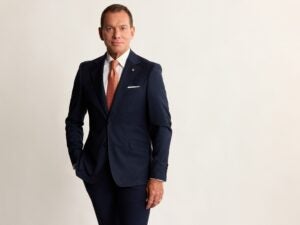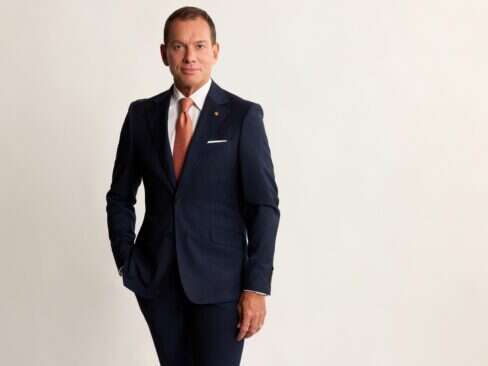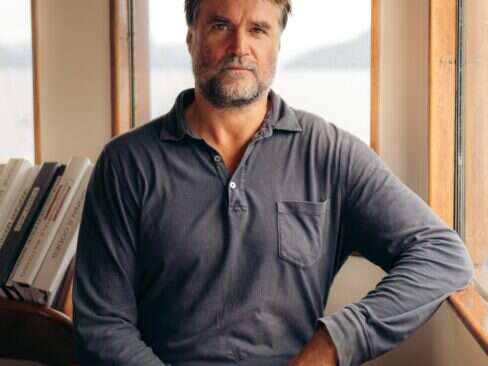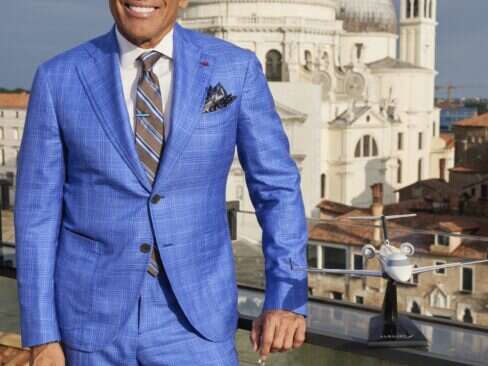Malta is an archipelago of seven islands about 50 miles south of Sicily. It is one of the world’s smallest and most densely populated countries and has a been a popular location for movie productions and holiday goers. Part of the European Union since 2004 and the Eurozone since 2008, it is looking to capture more elite travelers be it arriving by private jet or superyacht. During a recent visit to New York the new CEO of the Malta Tourism Authority Paul Bugeja met Elite Traveler Editor-in-Chief Doug Gollan to make a case for visiting his homeland.
Elite Traveler: Tell us a little bit about your background?
Paul Bugeja: I have been in the tourism industry for 35 years, mostly focusing on the hotel industry and real estate. My background is finance and management. I started in the airport (working for Malta-based Corinthia Hotels International) in the duty free shops and in catering (and worked my way up). I was involved in the pre-opening of many properties for the Corinthia group, visiting many European cities and opening properties also in North Africa. I was always involved in the pre-opening team at that time, involved in any section of the property and business planning and any initial and annual planning as well beyond the first investment. It’s easy to buy the property, but eventually you need to ensure that guests do come in, and that the returns are there. I also served for MHRA [Malta Hotels and Restaurants Association] as President and gave me the exposure in Malta.
ET: How did you come to Malta Tourism Authority?
PB: The Minister [of Tourism Edward Zammit Lewis] approached me with this opportunity. I took up the challenge. The MHRA experience was lots of quantifying and saying what and how and why something should be done, and how we can do it better. When this opportunity arose, it was a chance to do what was best for the industry. Being Maltese and being from the industry, I saw the opportunity. There was goodwill from the government side, and the willingness to support the industry and to enjoy the industry’s support. People were in the job not for the job but for the love of Malta. This was an enlightening experience for me. You are in the industry, in the business, but when you see people whose hearts are in the job, it’s completely different. You know that if you’re going to fail, it’s your own fault.
ET: What are some of the challenges you have?
PB: We need to reinvent ourselves as the MTA [Malta Tourism Authority], to ask ourselves why we exist, and do a bit of soul-searching. It’s simple; we’re there for our guests and our clients. As the MTA, we don’t only need to look at tourists, there are also the owners we license to know that the industry is well served, and we need to communicate with our internal clients—our employees. We need to look at it holistically, and say, we’re not there for our own existence or just to issue licenses or to go around enforcing the law. We are there for the client, whoever that client may me. That’s something that I want to bring always to the forefront, to keep myself motivated and to keep the team motivated.
ET: Why does Malta offer elite travelers?
PB: Malta has many strengths. First, the location. We are in the middle of one of the loveliest seas in the world, the Mediterranean. Blue seas, blue skies, and good weather. Hospitality is our strength; there is a long history of hospitality among the Maltese. We put that into practice. There’s the cultural aspect. We have very strong history, culture, and religious heritage. 95 percent of the Maltese are Roman Catholic, and our history is so much interlinked with religion, because of the wars and the Knights of Malta and the history after.
The island also has great activities to support the culture and provide entertainment. The sports section is very strong. We have four marinas, and have an annual yachting competition—the Rolex Middle Sea Race—which has become a calendar event. As the MTA we’re driving forward a permanent calendar of events, 365 days a year. You won’t get lost on Malta—it’s small—but you’ll get lost trying to decide what to do. There’s a regatta twice a year where there’s a competition in our Grand Harbor, there’s a fireworks festival in the Grand Harbor and in another city during a long weekend. We also have an air-show that draws planes from all over the world to Malta. There’s the Easter Procession, which take three to four hours with hundreds of participants and live animals recreating the passion of the Christ throughout those days. In Christmas there are exhibitions of cribs all over Malta to recreate Bethlehem. Religion is ingrained, but we’re obviously open.
There’s also the Notte Bianca in October in which the city of Valletta is left open throughout the night, and a lot of cultural and musical activities are organized. The Auberge de Castilles, which houses the Prime Minister’s office, is open as well overnight. Candles are everywhere. BirguFest is similar, a festival where candles light up the entire city. Each local council—and there are 69 local councils—also has its own signature events throughout the year, such as the chocolate festival, dairy festival, and pumpkin festival. The local councils are helping the locals create these tourism activities. Medieval festivals take place in Mdina, a beautiful city, really a walking museum. It’s a silent city, there are no cars allowed. It’s a completely different world.
Speaking of different worlds, there’s also Comino and Gozo, the two islands off of Malta. We say about these islands: “Time stood still.” Malta can be hectic with all of the activities and nightlife. Gozo is a quiet space. It’s often where the Maltese go to relax. After a few days in Malta, you have great access to Sicily, Rome, or Gozo, which is only 20 minutes from Malta. In Gozo you can rent private luxury farmhouses with pools and with personal chefs similar to Tuscany, or the Hamptons to New York.
In terms of places of interest to visit and historic places, cultural places, churches, Malta is only second to Rome. In such a small space—300 square kilometers [35 by 15 kilometers]—really and truly, I keep experiencing and exploring new places.
Beyond having all of the international shopping opportunities, Malta attracts lots of small designers, and there’s Filigree silver jewelry and Mdina glass. Maltese are tradesmen by our history, and we continue that tradition today with unique craftsmanship.
ET: What else is there to do in Malta?
PB: There are beautiful walks on Malta and Gozo, some organized, or you can follow a map. In Malta you can truly find everything except for snow—that’s the exception. Diving is also a strong point for tourism. We have some beautiful sites in and around Malta and Gozo. We’re blessed. We supported the industry by sinking ships and creating the environment as well. Swimming and diving with tuna is also popular these days, though we’re careful to schedule these excursions so as not to disturb the tuna.
ET: What about the hotels and hotel development?
PB: All major chains operate in Malta. Hilton, Kempinski, Sheraton, Starwood, InterContinental and Radisson are there as is Corinthia and other local brands. In terms of new developments, there’s quite a lot of interest in Malta. The MTA and the government have allowed for increasing the height limits for buildings to two, three, four stories, which creates more opportunities for owners to increase room stock. At the same time, we don’t increase for the sake of increase. We ensure that the product is upgraded concurrently. There are at least two new opportunities: The White Rocks is a new complex, and is in the tendering process. It will be a multi-use development for hotels, villas, residences, sports complexes, and luxury units. Most likely it will be a mix, as it’s a substantial piece of land.
There are also areas where one can develop, such as the Jerma palace site in the South. We’re keen on maintaining the buildings that exist, to maintain the character and environment of the small island. We’re very conscious of the environment.
ET: In addition to the potential for tourism investment, what are some other key industries in Malta?
PB: Financial services are well organized in Malta. We follow the British standards. Quite a lot of offshore banks have set up in Malta for the tax benefits. Pharmaceutical companies and manufacturing have also set up in Malta for the European market, including production and packing for the European market and outside as well. There’s also E-Gaming, which has grown substantially mainly because of tax benefits. Quite a few companies have set up in Malta. We have quite a number of skilled people who develop programs as well.
ET: What about meeting or incentive travel?
PB: We have all the amenities to hold conventions below 4,000 guests. It’s been done. The Tourist Authority would oversee and help coordinate. In terms of uniqueness, any event launched in Malta will have remarkable settings—the sea, ancient castles, historic squares, in the upper Barrakka Gardens overseeing the [historic] fortifications. We’re often chosen for movie locations, and MTV hosts a major event on the island each year in a big piazza with the backdrop of a church and fireworks. We’re very accommodating of these sorts of events. Brad [Pitt] and Angelina [Jolie] just shot their new movie, By The Sea, in Malta, and Gladiator, Troy, The Count of Monte Cristo, Titanic, Robin Williams’ Popeye were all filmed on Malta.













